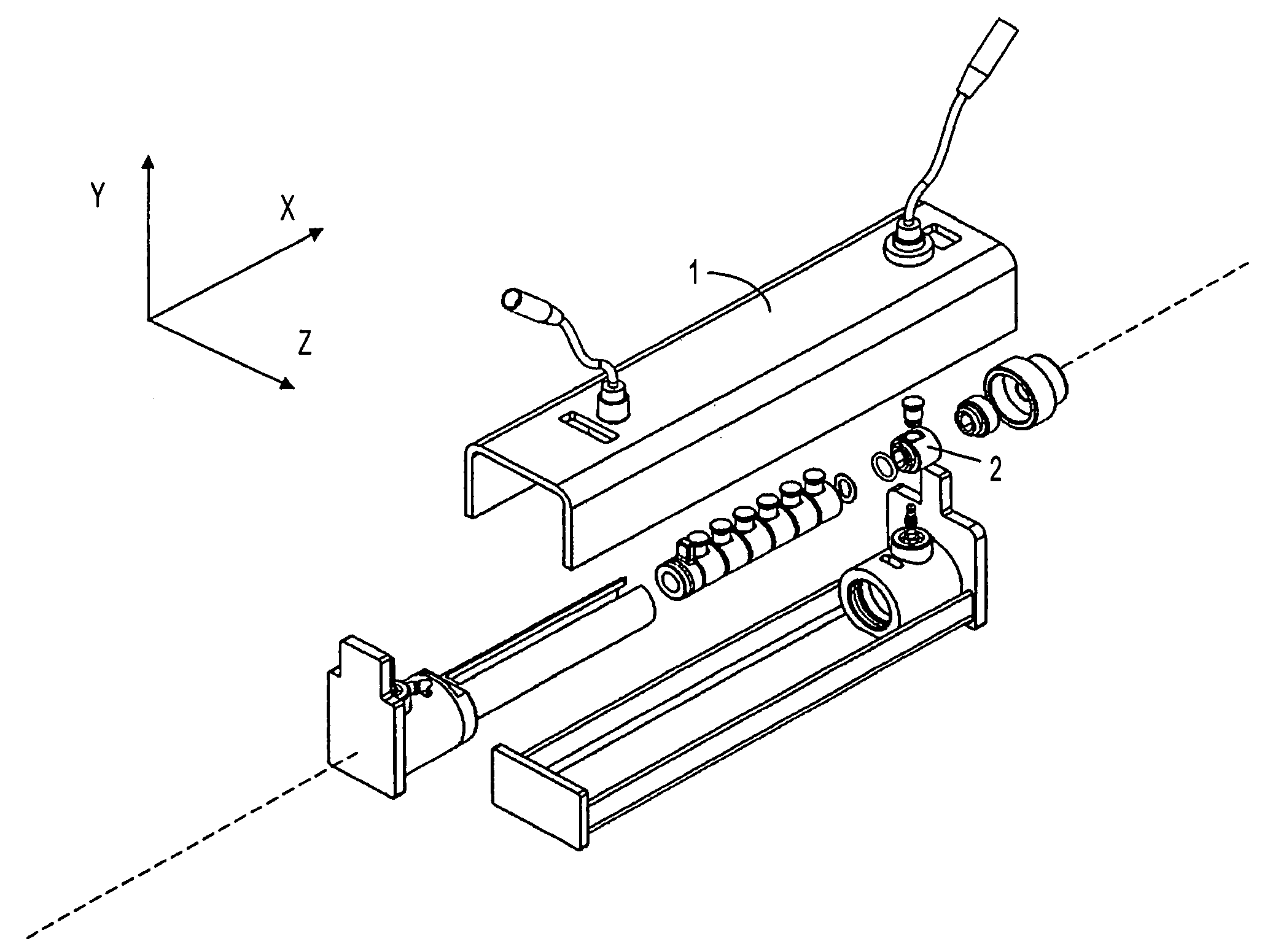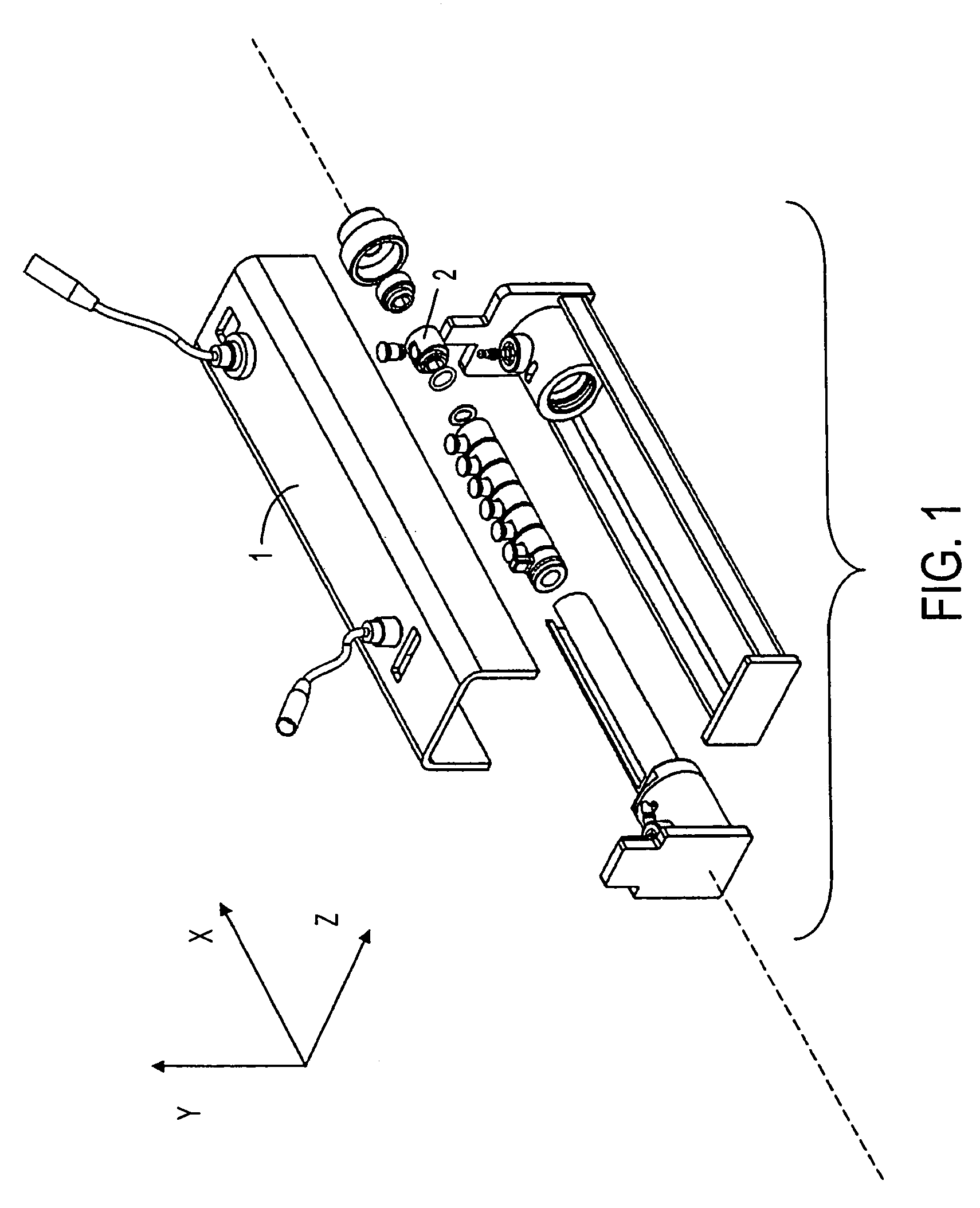Solution phase electrophoresis device, components, and methods
a technology of electrophoresis and solution phase, applied in the direction of fluid pressure measurement, liquid/fluent solid measurement, peptide, etc., can solve the problem of complex eukaryotic proteome, the total number of distinct protein species present concurrently in a eukaryotic cell, and the resolving capacity of current analytical techniques, so as to achieve the effect of convenient disassembly
- Summary
- Abstract
- Description
- Claims
- Application Information
AI Technical Summary
Benefits of technology
Problems solved by technology
Method used
Image
Examples
example 1
Fractionation of Rat Liver Lysate
[0289]Rat liver tissue is lysed by sonication at a final concentration of 5% (w / v) in 7M urea, 2M thiourea, 4% CHAPS (collectively, “UTC”) and protease inhibitors. After reduction, alkylation, centrifugation, and determination of the protein concentration of the supernatant fraction, samples are diluted to 0.6 mg / ml protein in UTC containing 1% ZOOM® ampholytes, pH 3-10 (Invitrogen Corp., Carlsbad, Calif., USA), 20 mM DTT, and a trace of bromophenol blue dye.
[0290]An aliquot of 3.35 ml is distributed equally into five central sample chambers of seven total chambers, each with capacity of about 670 μl, designed and assembled according to the device of the present invention. The five chambers are partitioned from one another by IBDs having pH 3.0, 4.6, 5.4, 6.2, 7.0, and 10.0.
[0291]After fractionation for 3 hours, the resulting fractions are collected and a 155 μl aliquot of each fraction is loaded onto a separate ZOOM® IPG strips (Invitrogen Corp., Ca...
example 2
Improvement in Detection of Low Abundance Proteins
[0297]Rat liver lysate is prepared and fractionated in a device of the present invention, essentially according to Example 1.
[0298]Separate 155 μl aliquots of the pH 4.6-5.4 fraction are loaded respectively on a pH 4.5-5.5 narrow range ZOOM® IPG strip (Invitrogen Corp., Carlsbad, Calif., USA) and a pH 4-7 ZOOM® IPG strip (Invitrogen Corp., Carlsbad, Calif., USA) and allowed to rehydrate overnight. The applied proteins are then focused using the ZOOM® IPGRunner™ System (Invitrogen Corp., Carlsbad, Calif., USA). The focused ZOOM® Strips are separately applied to NuPAGE® Novex 4-12% Bis-Tris ZOOM gels. The resulting 2DE gels are stained with SimplyBlue™ SafeStain and scanned.
[0299]Unfractionated rat liver lysate is analogously applied to a pH 4.5-5.5 narrow range ZOOM® IPG strip (Invitrogen Corp., Carlsbad, Calif., USA) as a control.
[0300]FIG. 13A shows the solution phase fraction run on a pH 4-7 IPG strip, demonstrating that prefractio...
PUM
| Property | Measurement | Unit |
|---|---|---|
| volume | aaaaa | aaaaa |
| volume | aaaaa | aaaaa |
| volume | aaaaa | aaaaa |
Abstract
Description
Claims
Application Information
 Login to View More
Login to View More - R&D
- Intellectual Property
- Life Sciences
- Materials
- Tech Scout
- Unparalleled Data Quality
- Higher Quality Content
- 60% Fewer Hallucinations
Browse by: Latest US Patents, China's latest patents, Technical Efficacy Thesaurus, Application Domain, Technology Topic, Popular Technical Reports.
© 2025 PatSnap. All rights reserved.Legal|Privacy policy|Modern Slavery Act Transparency Statement|Sitemap|About US| Contact US: help@patsnap.com



